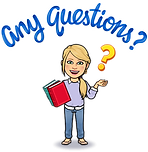Introduction to Functions: Understanding Relationships in Math
Welcome to our learning module on functions! In this engaging video-based module, we’ll begin by exploring the concept of relations and how to determine if a relation qualifies as a function. A function is a special type of relation where each input maps to exactly one unique output. You’ll learn strategies like the vertical line test and develop an intuitive understanding of this foundational concept. Additionally, we’ll explore the five ways to represent a function: a mapping diagram, a table, a graph, descriptive words, and an equation. These methods will help you see the many forms that functions can take and how they connect.
Next, we’ll focus on identifying linear functions and representing them in various ways. You’ll see how relations evolve into functions, and how to recognize these connections in graphs, equations, and tables. By comparing different linear functions, you’ll determine which has a greater rate of change (slope) or a higher initial value (y-intercept). You’ll also strengthen your ability to distinguish between linear and nonlinear relationships, giving you the tools to analyze and interpret data patterns like a pro. These skills will show you how math helps us describe and understand relationships in the world around us.
Finally, we’ll wrap up our module by exploring qualitative graphs—a visual way to understand how data changes over specific intervals. You’ll interpret graphs to determine when data is increasing, decreasing, or remaining constant and use this insight to describe real-world situations. By the end of this module, you’ll not only master the mechanics of functions but also gain a deeper appreciation of how they help us interpret and communicate mathematical relationships effectively. Let’s dive into the fascinating world of functions and relations together!
Functions Lesson
Lesson Objective: By the end of this lesson, students will be able to create and interpret mapping diagrams and determine whether a relation is a function by analyzing the relationship between input and output values.
Essential Question: What strategies can you use to determine if a relation is a function?
Check for Understanding: Test your understanding with these end-of-lesson practice problems to reinforce your skills and master the concept!
5 Ways to Represent a Function Lesson
Lesson Objective: By the end of this lesson, students will be able to represent functions using words, mapping diagrams, input-output tables, graphs, and equations, and compare two functions each represented in a different way to analyze their similarities and differences.
Essential Question: What are the benefits to representing a function in different ways?
Enhance student understanding with these Graphic Organizers featuring the Frayer Model! One template includes a four-quadrant graph, while the second is designed with a first quadrant graph for real-world functions. These organizers help students visually represent functions in words, equations, mapping diagrams, tables of values, and graphs—perfect for strengthening their function skills!
Unlock the power of teamwork with our Cooperative Learning Task! This set of 5 task cards, designed using the Frayer Model, challenges students to represent a function in 5 ways. Given one representation, students work together in a jigsaw format to complete the other 4 ways—words, equation, mapping diagram, table of values, and graph. Perfect for fostering collaboration and critical thinking!
Check for Understanding: Test your understanding with these end-of-lesson practice problems to reinforce your skills and master the concept!
Construct & Interpret Functions Lesson
Lesson Objective: By the end of this lesson, students will be able to construct a function to model a linear relationship, identify the rate of change of the linear function, and determine the initial value of the function.
Essential Question: How do you write an equation from a model of a linear relationship?
In this cooperative learning activity, students will work in teams to sort 36 characteristic cards into six different linear functions. Each function will include six components: an equation in slope-intercept form, a table of values, the slope, the y-intercept, a solution, and a graph. By sorting these characteristics correctly, students will strengthen their understanding of linear functions and how different representations connect.
Check for Understanding: Test your understanding with these end-of-lesson practice problems to reinforce your skills and master the concept!
Linear or Nonlinear Lesson
Lesson Objective: By the end of this lesson, students will be able to identify linear and nonlinear functions from equations and graphs.
Essential Question: What strategies can you use to determine whether a function is linear or not?
Check for Understanding: Test your understanding with these end-of-lesson practice problems to reinforce your skills and master the concept!
Analyzing & Sketching Graphs Lesson
Lesson Objective: By the end of this lesson, students will be able to analyze a graph of a functional relationship between two quantities, identify where and/or if the function is increasing or decreasing, and describe the qualitative features of the function.
Essential Question: How can you describe a relationship between two quantities qualitatively?
Check for Understanding: Test your understanding with these end-of-lesson practice problems to reinforce your skills and master the concept!





.jpg)




